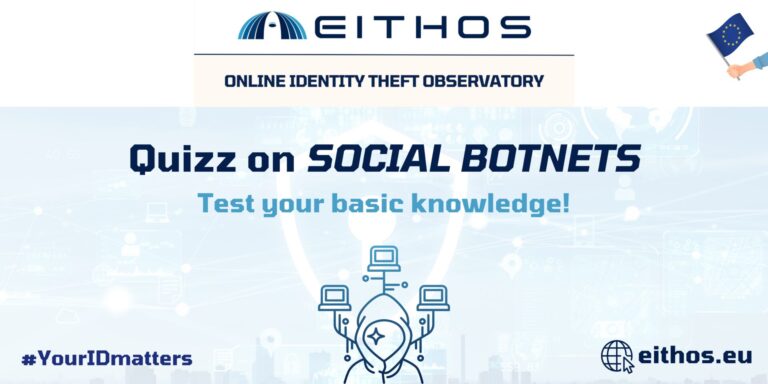What is a BOT? A program that performs automated tasks. In a cyber security context, a malware-infected computer that carries out tasks set by someone other than the device’s legitimate user.
What is a BOTNET? A collection of computers infected by bots and remotely controlled by an actor to conduct malicious activities without the user’s knowledge, such as to send spam, spread malware, conduct denial of service activities or steal data.
What is a SOCIAL BOTNET?
A social botnet is a network of automated social media accounts (known as bots), that are controlled by a single individual or group with illegal objectives. The individual bots within a social botnet are designed to mimic human behavior. They may engage with real users by liking, sharing, commenting, or posting content in a way that looks authentic. To avoid detection, these bots have profiles that look like real accounts,: they include photos, personal information, and a history of activity. They may also interact with each other to create the appearance of real interactions, making it harder for both platforms and users to distinguish them from accounts with real persons behind.
Social botnets take advantage of identity supplantion for any activity that would need homan action online on a massive scale, such as spread misinformation, amplify specific messages, or simulate genuine human interactions. They can also reach extents to influence public opinion, manipulate online discourse, or achieve certain goals, such as promoting a political agenda, boosting a product’s visibility, or discrediting opponents. Additionally, they can be harmful to specific individuals, as they are able to impersonate any person and taint their public image, or employing phishing techniques under the disguise of an acquaintance.
Play our quizz, test your knowledge!
Scientific articles
The rise of social bots
Full article
Bot or Human? Detecting ChatGPT Imposters with A Single Question
Full article
Social media bot detection with deep learning methods: a systematic review
Full article
The Evolution of X’s Terms of Service concerning
Privacy, Fake Profiles, and Declining User Engagement
In the last two years, X (formerly Twitter) has undergone significant changes, especially regarding its terms of service (ToS), partly in response to new regulatory frameworks like the European Union’s Data Act. This legislation, aimed at ensuring greater transparency and control over user data, required platforms like X to revise their policies. The key updates to X’s ToS focus on data collection, third-party data sharing, and content moderation, which have implications for both users and advertisers.
One of the most noticeable changes in X’s ToS is how the platform handles user data. The new terms outline broader data collection methods, where X can access a wider range of user information, including biometric data and employment history. This shift was driven by the platform’s aim to enhance its machine-learning models for personalized ads and recommendations. While these practices are technically compliant with the Data Act’s provisions, they have raised concerns about the extent to which user data is shared with third-party companies for advertising and other purposes. Additionally, the revised terms allow for closer scrutiny of users’ interactions, even across external websites that incorporate X’s embedded features like “share” buttons or widgets. This has lit debates over user privacy, as many feel their consent is being neglected by these widespread data-sharing mechanisms. The issue of fake profiles is not new in X, and recent changes in the platform’s moderation policies aim to address this. While X introduced a more aggressive verification system, with subscription-based verification through X Premium (previously known as Twitter Blue), many argue that this has not fully solved the problem. Fake accounts continue to proliferate, exploiting loopholes in the automated verification process. Despite these efforts, the persistence of bots and fake profiles has contributed to weaken user trust, especially in the context of important public discussions and political discourses.
Over the past year, X has seen a decline in active users, and multiple factors have contributed to this trend. The platform’s monetization model, particularly its tendency to focus pressure on paid verification, has alienated some users. Many feel that X has shifted away from its roots as a platform for free and open discourse, becoming more focused on commercial interests. The rise of alternative platforms that prioritize user privacy, such as Mastodon and Threads, has also implied the appearance of new players to the game. The perception that these alternatives offer a more transparent and community-driven experience has only furthered the migration away from X.
In conclusion, the changes to X’s terms of service, while necessary for regulatory compliance, have not resonated well with all users. Alongside the ongoing issue of fake profiles and the platform’s evolving focus on revenue, these factors have contributed to a decline in user engagement. While X remains a significant player in the social media landscape, in terms of regaining user trust and maintaining its relevance, it is going down the slope.


